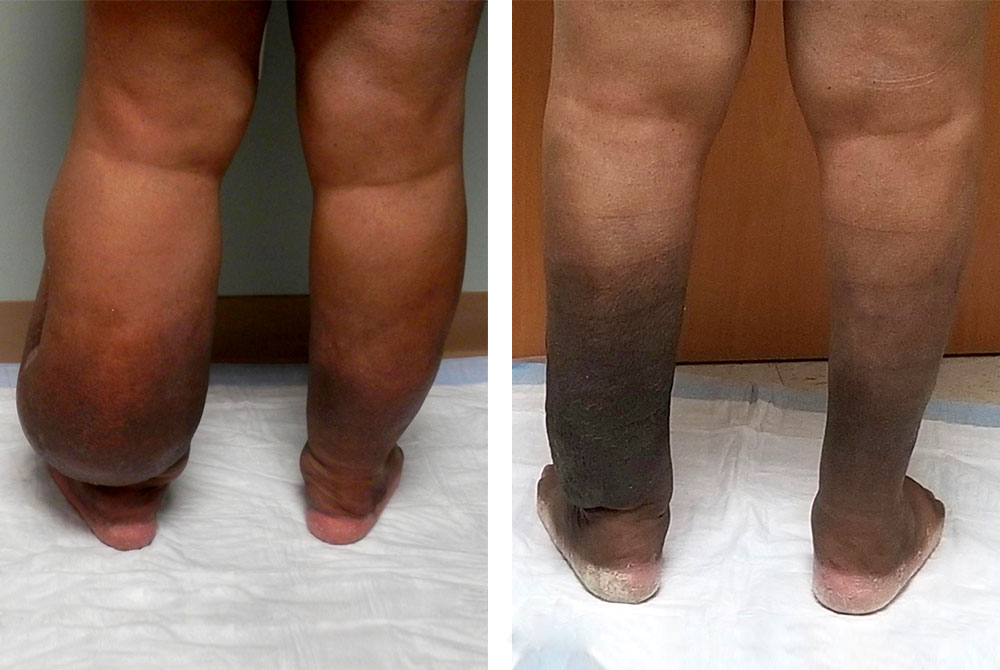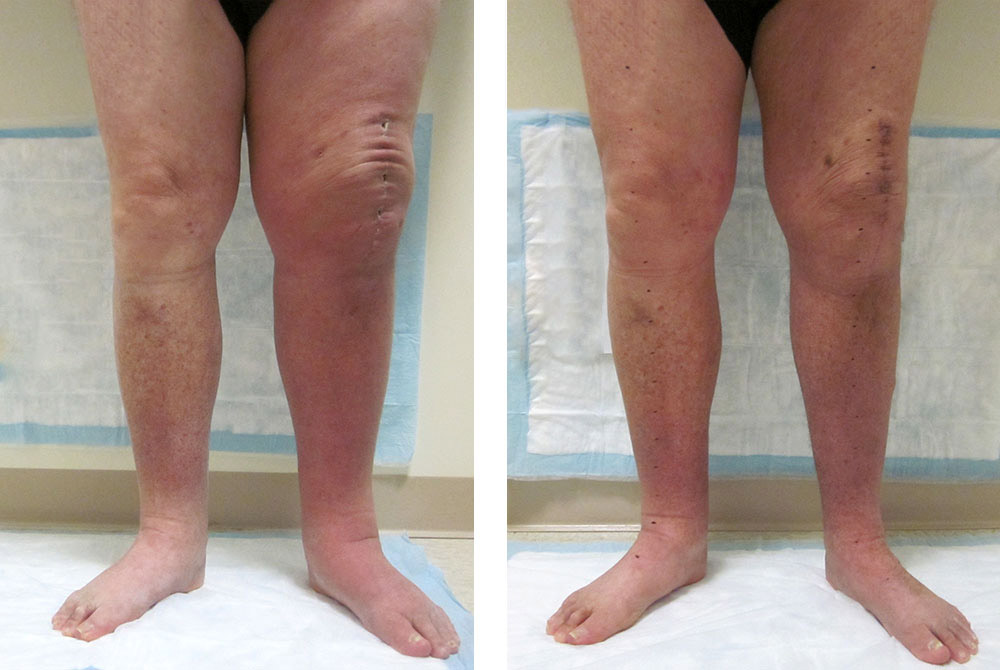Before & After Results

Before:
Bilateral Lower Extremity Stage 2 pitting edema, Lymphedema secondary to Chronic Venous Insufficiency. Skin is hard, fibrotic, dry and discolored.
After:
Significant decrease in fluid retention and reduction in limb swelling. Treatment included disease state management, exercise as tolerated, diet compliance, in home vasopneumatic device therapy, elevating the affected extremity when possible, and a meticulous skin care regiment to avoid wounds and infection.
Before:
Bilateral Lower Extremity Stage 3 Lymphedema with pitting, secondary to Chronic Venous Insufficiency with abdominal involvement. Skin presents with improved fungal stasis dermatitis, and improved papillomatosis.
After:
Significant decrease in fluid retention and reduction in limb swelling and fibrosis achieved. Healthy skin improvement. Treatment included disease state management, exercise as tolerated, diet compliance, in home vasopneumatic device therapy, elevating the affected extremity when possible, and a meticulous skin care regiment to avoid wounds and infection.
Before:
Lymphedema can occur after orthopedic surgery and typically presents symptoms of swelling, pain, inflammation, and itching. Sometimes it can prolong the closing of the surgical incision. Lymphedema left untreated over the years, can result in acute disability in the affected limbs.
After:
Patient received Manual Lymph Drainage and reduced swelling by moving the accumulated fluid from the swollen area. Second, wastes caused by the breakdown of damaged tissues are moved away from the surgical area. Third, lymphatic flow is jump-started at the surgical site which facilitates the delivery of nutrients to the healing tissues. It does this by creating room for the normal circulatory fluid to reach the damaged tissues. Prior to lymphatic drainage the flow of this fluid was blocked by stagnant fluid (swelling).
Patient Presented With Left Lower Extremity Lymphedema Related to POST KNEE REPLACEMENT SURGERY



